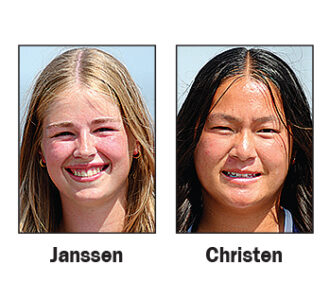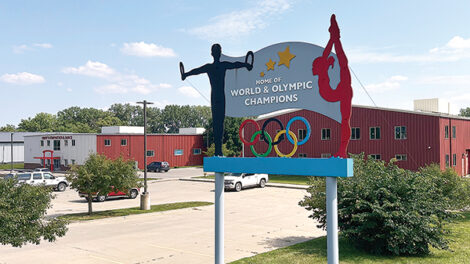Elmwood Country Club: Ahead of the curve?
The rest of the golf world may be just catching up to Marshalltown’s Elmwood Country Club.
After tacking on distance — and more distance — for a decade or two, more and more tournament directors are including short, drivable par-4 holes in their mix. And, while drivable, the best short holes also present risk to go with the obvious reward that lack of distance offers.
Though many still advance the “slug and go” course setup with yardages approaching 8,000 yards for 18 holes, the sport’s ruling bodies (United States Golf Association,The Royal and Ancient Golf Club, PGA Tour and the PGA of America) have recently included at least one shorter, often drivable, par-4 hole in their tournament setups.
An accurate drive rewards the shotmaker with a putt for eagle, while offering an almost cinch birdie for the player. However, a miss right or left, or long may result in a bogie or worse. Even a par likely will cost the player a stroke to the field.
Adding distance to counter the vast improvement in clubs, balls and player conditioning, has become the go-to thing to do in this day of 300-yard drives, 200-yard 7-irons and 150-yard sand wedges.
Elmwood fools the unsuspecting player who sees only its short distance — 5,758 from the tips — and lures him into hitting driver everywhere. That may be a very good-if-straight policy because driver-short iron makes for a much easier par-4 than driver-fairway wood that some 500-plus-yard 4-pars require. Of course, wedge from the trees is tricky and nearly impossible from the bottom of the creek.
Holes 4 (280 yards) and 18 (293) are pretty drivable. Numbers 1, 11 and 17 have been driven and number 9 was drivable until the hole was lengthened and rough grown on the uphill approach to the green.
Years ago an Elmwood member alleged that he had driven the 389-yard 8th hole and had made a hole-in-one. He was playing in November and had only his non-golfing uncle to back up his story. His claim was universally discounted though he stuck to it until his passing.
At Elmwood, there are no 500-yard par-4s; there are no 500-yard par 5s — the par-5s are only 485 and 462 yards long. Piece of cake, right? Only if the drive is in the fairway and not in the trees or the creek or out of bounds.
And, even if the drive is in the fairway on the back nine, there are few level lies. A player with a perfectly-centered tee ball will likely find himself with the ball below his feet, above his feet, standing uphill or downhill. And that shot with an uncomfortable stance may be to an elevated green.
Double-digit scores on some of Elwmood’s short holes are not uncommon. All of which may answer why the course record at Elmwood is 61 while the record score at the 500-yard-longer American Legion Golf Course is Green Superintendent Bill Benda’s 59.
The winning score at the 1970 Iowa Amateur held at Elmwood was 205 for 54 holes — only 5-under par. That same 5-under won the 1972 Iowa Open at Elmwood with a field that included several PGA tour players who failed to qualify for that week’s Milwaukee Open, attracted by the sizable purse that local businessmen raised. The scores are an indicator that short is not always easy.
From a fan’s point of view, interesting short holes help break up the monotony of ever-longer golf courses.
All in all, Elmwood may be short but it is very competitive.
Maybe Elmwood has been ahead of the curve all these years and the rest of golf is just now catching up.




